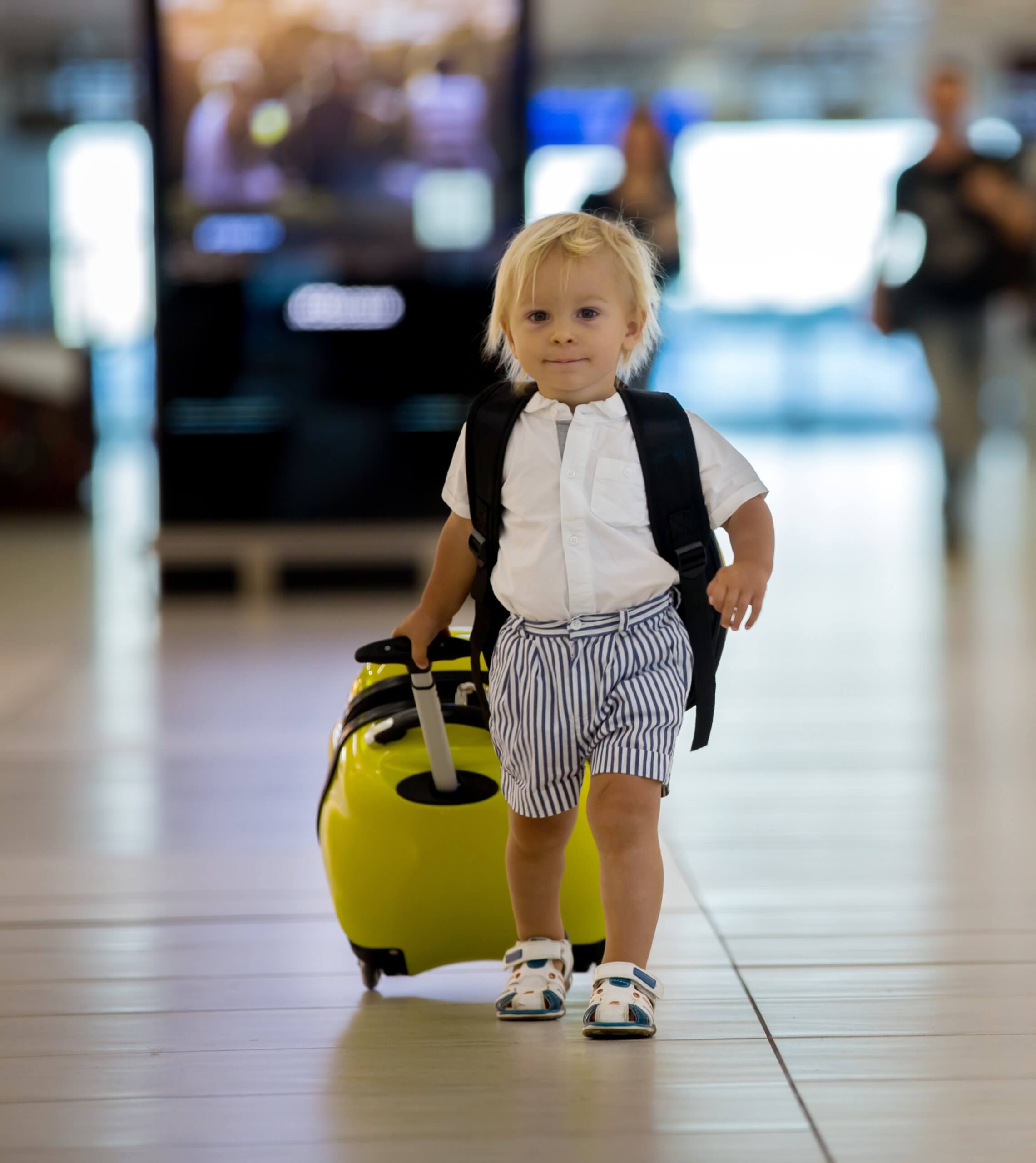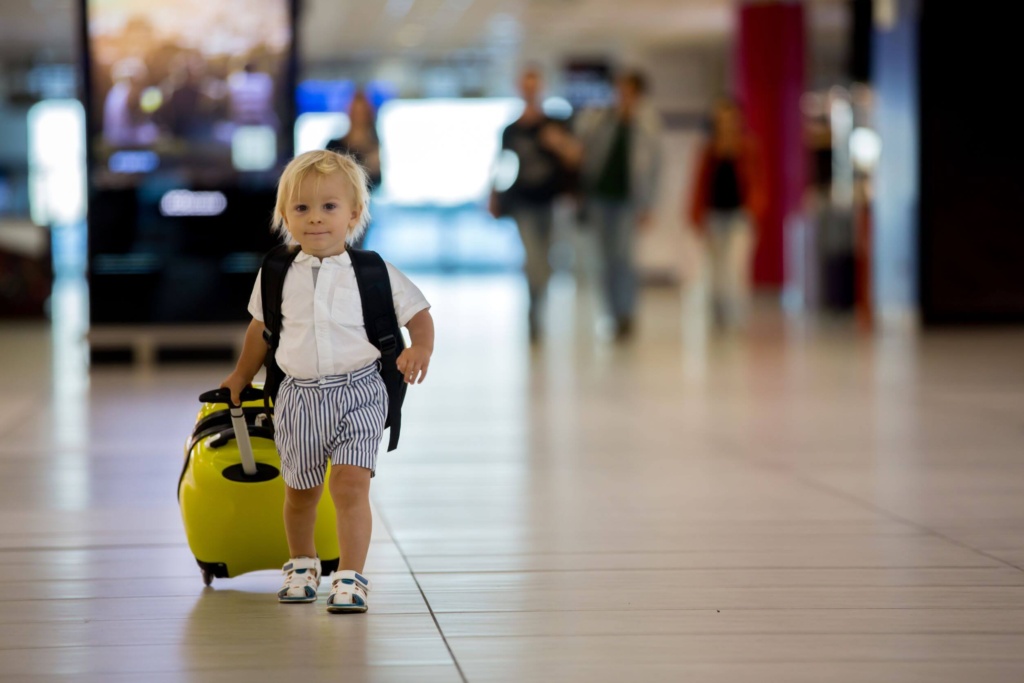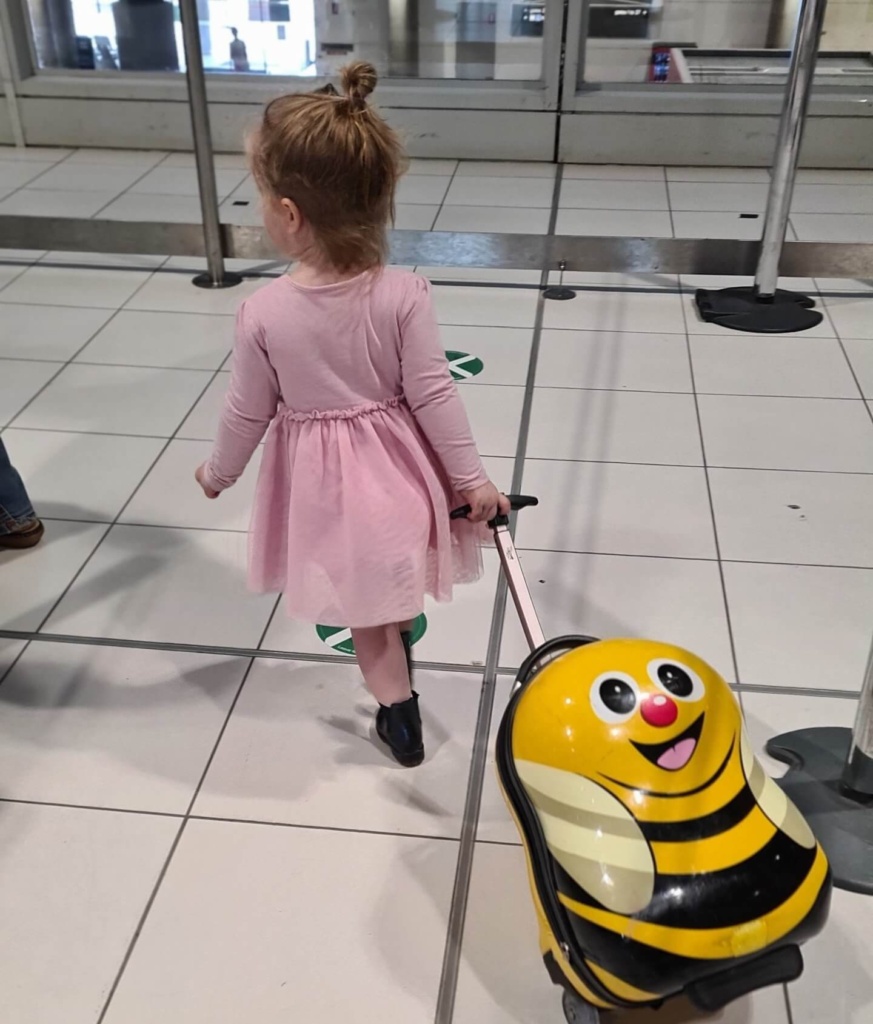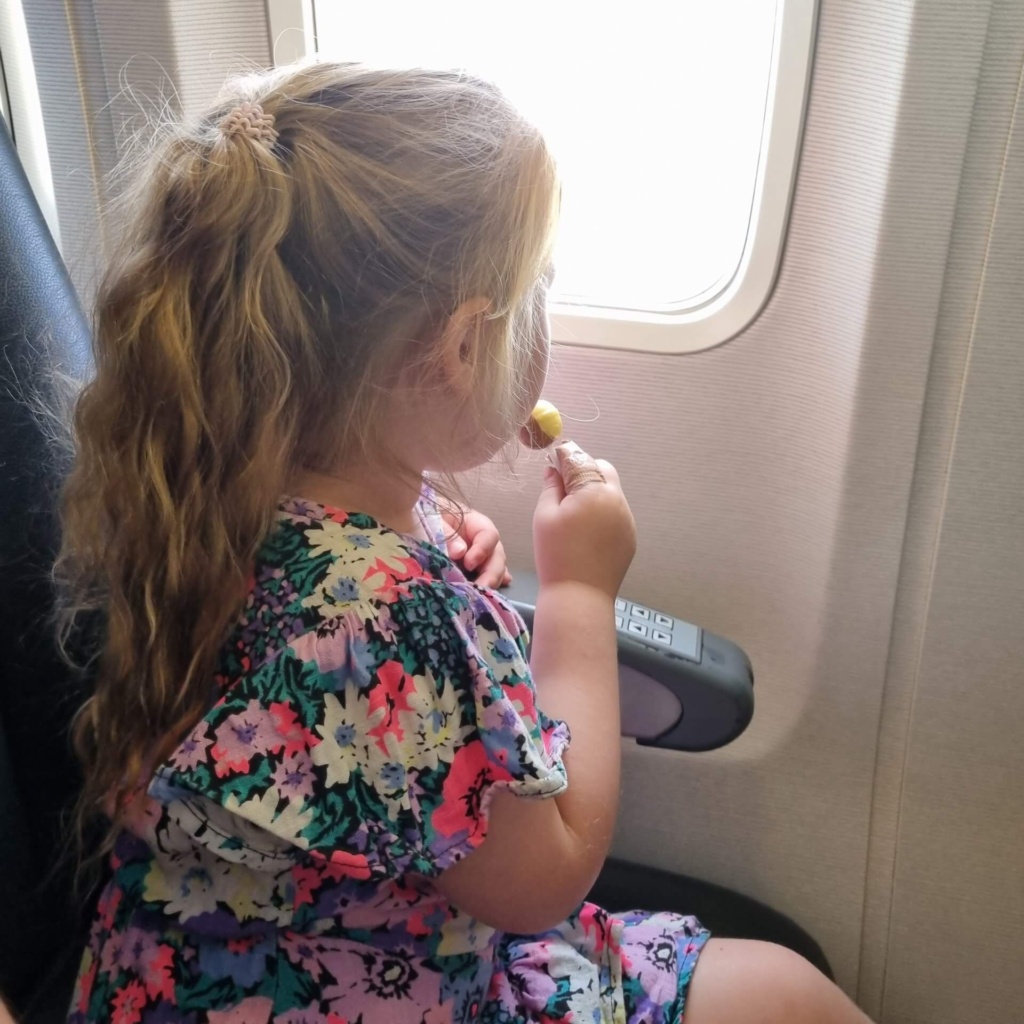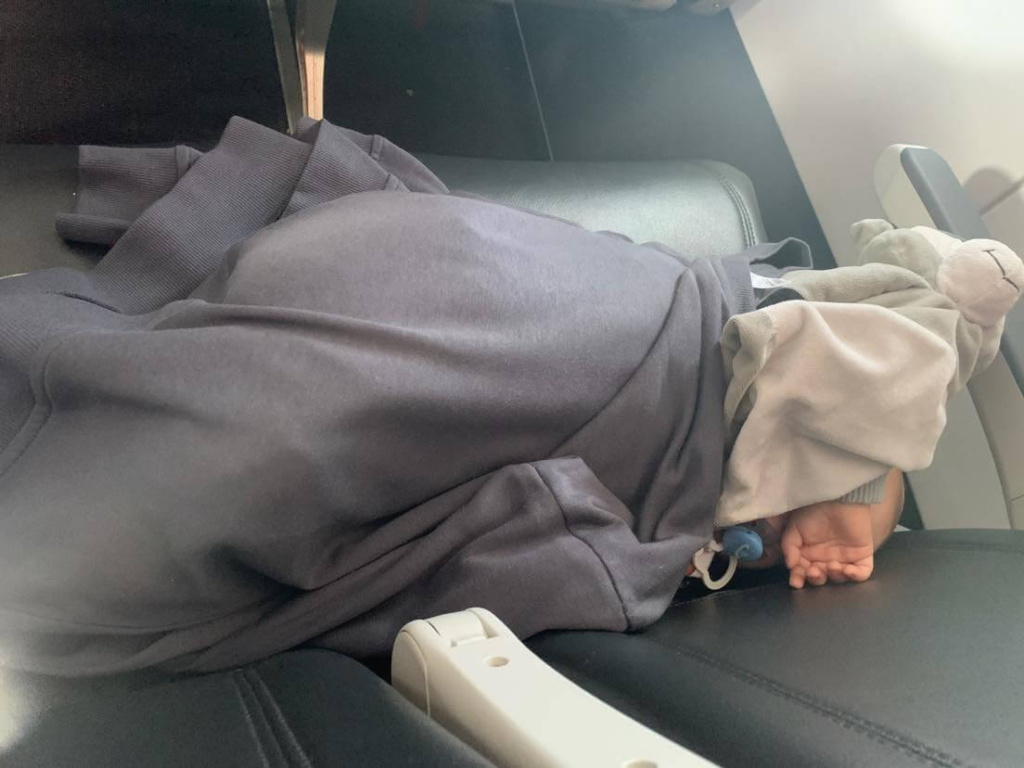Finally, after more than two years of us Australians being grounded, state and international borders have opened up and we can finally get up in the sky and explore like Aussies are meant to do!
However, a trip with children may be even more daunting than it seemed a couple of years ago – dealing with masks, fears of illness, testing, increased stops, fewer route options available, journeys may be longer than usual, and when you have little ones, more time in airports and in the air is something you have to consider.
We have some ideas on how to prepare ahead, fill the time during the journey, and how to help little people deal with their first bouts of jet lag.
Booking flights
Airlines have to be alerted to travelling children, even if they’ll be sitting on laps ahead of time. If the baby hasn’t arrived yet when you book, book for only people who have names, then contact your airline to update them after the baby is born, they can add their names closer to check-in.
A great suggestion from Flight Centre is, for example, for a family of four people, try to block out the window seat and the aisle seat, leaving the middle seat empty, or both aisle seats if it’s a row of four and do the same for the row behind. The middle seats on a plane are generally the last seats to be filled and you can usually luck out with some space for the kids to sprawl out.
If your baby is sleeping a lot or still taking breast or bottle, the window seat is great to lean on. If your older child is quite active, an aisle seat may be easier to get in and out, especially for bathroom breaks.
If you’re hoping to bring car seats onboard, you may have to alert the airline of your intention to travel with a car seat onboard when you book your tickets, and check they’re on the approved list. While many larger planes offer bassinets, they’re often limited and may either need to be pre-booked or are offered on a first-come, first-served basis, so ask your airline.
Children’s meals are usually on offer, but like any special requirements with meals, they generally need to be booked with your tickets. Also, in-house entertainment is not always guaranteed free with the price of your seat, so ask ahead of time, and if you think movies or games will help your child pass the time, look into it ahead of time or plan on having your own device ready and stocked up with child-friendly goodies.
Since Covid-19 is still a reality, check before you go about vaccine, testing and mask requirements for everyone travelling both on the flights and at your destination.
Preparing your child for the big journey
If your child is old enough to comprehend what’s happening, it’s a good idea to talk to them about the trip ahead of time.
“Our five-year-old daughter Sloane is a little anxious about change, so when we have travelled overseas we discuss it in detail before we go,” according to Brent, general manager of The Scholars Group.
“We talk about what she can expect, and what fun and exciting things may happen during the journey and at the destination. We also talk about sleep patterns when she arrives, and depending on the time difference, how she may be a little more tired than usual and we will “try” and stay up to normal bedtime as soon as we can even if we have a little nap during transit. We prepare, prepare, prepare!”
At the airport
You may remember a time when all you needed was a backpack to join you halfway around the world. Those days are pretty well over when you have children. Multiple suitcases, digital devices, comfort toys, snacks – it can feel extreme even if it’s domestic travel.
Most airlines offer early boarding for travellers with children. This can allow you extra time and space to settle children onboard but it also lengthens the amount of time spent in cabin confinement, so the choice is yours.
Dress your child in bright clothes so that they stand out in a crowd and if they’re old enough to understand, point out people they should talk to if they become separated from you and arrange an obvious meeting place they can look for if they can’t see you.
Get to the airport early so that your child can run around or play for a while.
Claire, operations support officer at Little Scholars, travelled to her home country of England with a one-year-old and was pregnant with her second.
“The best thing ever was dungarees! On the way over I found it hard to pick him up and juggle my bags,” Claire says. “On the way back I put him in a pair of dungarees and when needed I could scoop him up like a bag and walk with him. He loved it and would giggle madly as we walked along.”
Change your baby’s nappy right before boarding, because space is cramped inside plane toilets.
While generally, children under two are free or low-cost on most airlines, if you can afford the extra seat, it might be something to consider, especially for a long-haul flight, says Melanie, operations manager at Little Scholars, “Even though we didn’t have to book a seat for Harvey as he wasn’t quite two years old, we did anyway so we had some extra room,” she says. Everyone will be more comfortable with their own seats, especially parents who would otherwise be holding a child for hours into the journey, which can already be uncomfortable with limited legroom. An alternative might be to book rows with extra foot room, though keep in mind children aren’t allowed to sit in emergency rows.
Also, if you purchase a seat for your child, bringing his/her car seat is safer, but it can be a lot to lug with your child and carry-on all the way to and from your gate so you may consider renting a car seat at your destination.
If your baby is formula-fed, airlines will allow you to bring sterilised water, bottles and formula on board, so pack as much as you think you’ll need for the journey and some extra to cover any delays. Airport security may ask you to open the containers and taste the contents. If you’re travelling to other countries, it’s a good idea to bring enough formula for the entire trip, as formulas differ in each country, and a change could upset your baby.
Another suggestion is to bring a small, compact stroller that you take on board. It saves time at the luggage carousel and means you can hit the ground running when you land rather than having babies on your hip or dragging a slow-poke toddler behind while trying to catch your connection.
Onboard
Take off and landing can be especially painful for little ears. For babies, offer a dummy, breastmilk or a bottle to help with ear pressure as the sucking motion can help pop their ears. For older children, having chewing gum or lollipops on hand can help them with the ear pressure on board.
When travelling with small babies or toilet-training toddlers, accidents can happen. Make sure to have extra clothing, nappies, or underwear for everyone, including parents, in your carry-on. Also include some zip-lock bags to keep any soiled clothing in. No one around you wants or needs to experience scents that may stick in the air. You also should consider bringing a changing pad, either one from your nappy bag or disposable ones, because there are no guarantees there will be changing tables on your flight. Melanie says bringing extra blankets in carry-ons can also help for extra comfort when plane pillows and blankets don’t quite do the trick.
Meals on planes for anyone aren’t often gourmet, but for picky eaters, they can be a hard no. As we mentioned above, you can often pre-book children’s meals if meals are on offer. But also, feeding little ones pre-flight, and having plenty of bring-your-own snacks available for them, can make things easier and cheaper. Plus meal service can be slow and patience may wane as time on board go by. Encourage your children to drink frequently to avoid dehydration. You can often find filtered water fountains near the gate, so bring refillable bottles so you’re not waiting on flight attendants to refill your glass.
Sleeping on planes is challenging at best for anyone.
“I travelled to Thailand when my son was four months and my stepdaughter was six. Our saviours were wraps for my son and the Love to Dream swaddle for sleep time in the bassinet provided by the plane,” according to Skye, an educator with our Yatala campus. By keeping sleep time routines and items as familiar as you can for your child, they may sleep more soundly. A wrap or carrier is also helpful for settling the baby while in flight. Just remember children have to come out of any carriers or the bassinet when the seatbelt light comes on.
For older children, it may be helpful to bring their pillow from home, as they’re more comfortable than the ones airlines hand out, and of course their favourite sleeping toy or blanket. If they sleep with noise, sometimes the plane’s hums may be enough, or using an app on your phone (that works in airplane mode) with earphones could do the trick.
Entertaining children on a long flight is another challenge you should be prepared for.
“My best tip is getting little trinkets/toys and wrapping them up for my daughter. I will give one to her as she needs it, so there’s something new and interesting to break up the time on the flight,” says Jaimie-Lee, enrolment officer at Little Scholars. “It could even be an old toy she doesn’t play with or has forgotten about.”
Jaimie-Lee also makes sure to stock up on no-mess activities such as paperback books, colouring books and pencils. It’s best to check big box stores such as Kmart, Big W or Spotlight, which often have great activity sets for children, she says.
“When I travelled with my then-four year old I brought mini magnetic boards games to play on the plane and colouring-in packs,” says Janice, who’s based in our Yatala campus. “I also talked to the online staff letting them know I was travelling as a single mum, and they really did look after me on the plane for my bathroom breaks.”
“I made [my daughter] a busy book, so each page had different activities such as Velcro’d matching game, buttons/clips, as well as reusable/wipeable books,” says Charlotte, area manager for Little Scholars. “As well as a different small game or fidget toy to open each hour.”
Jet lag
It’s unavoidable, especially if you’re travelling more than three time zones, but there are ways to deal with jet lag that will help the whole family. First, sleep when your baby or child sleeps. This is one of the most important tips to adhere to in order to cope with a jetlagged child. A rested mum or dad is necessary to deal with an overtired little one! The amount of sunlight we receive helps set our internal body clock, so have your children out in bright light (careful to avoid sunburn, of course!) as much as possible.
If possible, plan a journey that incorporates stopovers. By breaking a trip up into more manageable time-zone blocks, your child’s jetlag will be less severe and so will the disruption to family life. The added bonuses of longer stopovers are the opportunities to stretch legs, the ability to sleep in a proper bed (and therefore be more rested for the next part of the journey) and the opportunity to see somewhere new!
The direction of travel influences how your body responds to the time change, according to Flight Centre. When travelling east, you might try to keep your child up as late as possible so they go to bed closer to the destination travel time. When travelling west, your child may have trouble falling asleep that first night. Plan ahead for difficulties falling asleep – books, calming music, and once you get there maybe it’s a calming bath with relaxing scents. If possible, try to wake your child up at the local time the day after you arrive, even if they have had a late night.
Extra tips
Talk to your doctor beforehand about immunisations. Don’t forget hats, sunscreen and age-appropriate insect repellent. Take a medical kit containing items such as baby paracetamol, thermometer, anti-itching lotion, anti-nausea medications, oral rehydration preparation and bandaids.
When you’re limited with clothing options to what you’ve packed, and you have messy children, another idea is to bring a small bottle of laundry detergent to wash and dry their clothes in hotel bathrooms.
If you’re dreading the travel to your destination, change your perspective! Try to look at long travel as an opportunity to spend unrestricted special time with your children. Play eye-spy games, have them look for a certain colour or item among the other passengers, make up stories, these can all be great language-building activities too!
